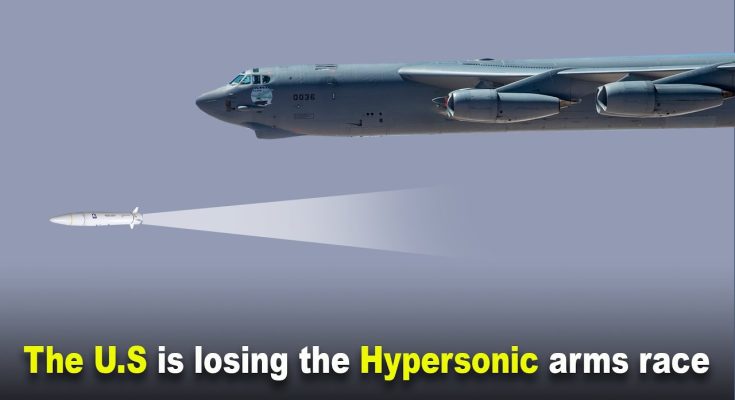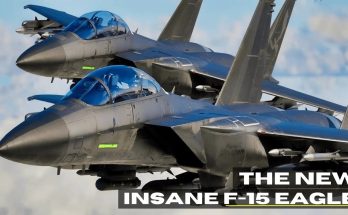US Hypersonic Glide Vehicle – AGM-183 ARRW
The AGM-183 Air-Launched Rapid Response Weapon (ARRW) is one of the United States’ most advanced hypersonic weapons, designed to provide a significant edge in modern warfare. Developed as part of the U.S. military’s ongoing push to develop hypersonic technologies, the AGM-183 ARRW represents the cutting edge in both speed and precision. Its capabilities are expected to be a game-changer in future conflicts, making it one of the most closely watched weapon systems in recent years.
What is the AGM-183 ARRW?
The AGM-183 ARRW is a hypersonic glide vehicle (HGV) that is launched from an aircraft and can travel at speeds exceeding Mach 5 — five times the speed of sound — or higher. This hypersonic missile is part of the U.S. Air Force’s effort to develop rapid-response, long-range weapons capable of striking high-value or time-sensitive targets with speed and precision.
Unlike traditional ballistic missiles that follow a predictable trajectory, hypersonic glide vehicles such as the ARRW are launched into the upper atmosphere and then “glide” back down to Earth, maneuvering unpredictably to avoid interception. This unique combination of speed and maneuverability makes the ARRW extremely difficult to detect and defend against.
Development and Purpose
The ARRW is designed to be launched from a variety of aircraft platforms, with its first tests conducted from B-52 Stratofortress bombers. The weapon is part of a broader initiative to develop hypersonic capabilities in response to growing threats from adversaries like China and Russia, who have made significant advancements in similar technologies.
The U.S. Air Force aims to deploy the AGM-183 ARRW as part of its Hypersonic and Ballistic Tracking Space Sensor (HBTSS) initiative and to enhance the ability to strike time-sensitive targets such as mobile missile launchers, air defense systems, and critical infrastructure. The ARRW’s ability to rapidly strike high-priority targets makes it a key component of modern deterrence strategies, especially in a conflict involving peer competitors who possess advanced missile defense capabilities.
Key Features of the AGM-183 ARRW
-
Hypersonic Speeds: The AGM-183 can travel at speeds greater than Mach 5, making it incredibly fast. At this velocity, the weapon can cover vast distances in a matter of minutes, reducing the time the enemy has to react and increasing the weapon’s effectiveness.
-
Glide Phase: After being launched, the ARRW enters a glide phase that allows it to maneuver unpredictably through the atmosphere, making it hard for enemy defense systems to anticipate and intercept its path. This maneuverability sets it apart from traditional ballistic missiles, which follow a more predictable trajectory.
-
Precision Targeting: Equipped with advanced guidance systems, the ARRW is designed for pinpoint accuracy, ensuring that it can strike critical infrastructure or military targets with minimal collateral damage. Its precision targeting makes it ideal for missions requiring minimal error margins.
-
Speed and Responsiveness: The “rapid response” feature of the AGM-183 is central to its mission. The ARRW is designed to be deployed quickly, allowing the U.S. military to respond to emerging threats in a matter of hours or less. Its speed ensures that it can strike before adversaries have the time to react or deploy countermeasures.
-
Launch Platform: The AGM-183 is designed to be launched from a variety of air platforms, particularly the B-52 Stratofortress. However, there is potential for other platforms, including the B-2 Spirit and, eventually, the B-21 Raider, to be adapted for carrying and launching the ARRW.
-
Survivability and Evasion: The speed and unpredictable nature of the glide phase make the ARRW extremely difficult to defend against. Hypersonic weapons like the ARRW have the ability to avoid most current missile defense systems, which are designed to intercept slower, more predictable ballistic missiles.
Testing and Development
The development of the AGM-183 ARRW has been progressing through a series of successful tests. These tests involve a variety of flight scenarios to validate its design and performance under different conditions. While the ARRW has seen some challenges along the way, the U.S. Air Force has made significant strides toward its operational deployment. The missile’s testing has included air-launched flight trials, which have demonstrated its potential in real-world conditions.
Despite some setbacks, including delays and issues with earlier prototypes, the Air Force continues to push forward with the development of hypersonic weapons. The ARRW is expected to enter operational service within the next few years, with further enhancements to its performance and deployment methods.
Strategic Importance
The introduction of the AGM-183 ARRW is a significant leap forward in the realm of advanced weaponry. Hypersonic weapons like the ARRW are seen as essential for maintaining a technological edge in future warfare, where rapid and overwhelming strikes could provide a decisive advantage.
The ARRW’s hypersonic speed, maneuverability, and precision make it a potential game-changer in scenarios where conventional weapons might be too slow or easily intercepted. Its rapid response and ability to strike critical, high-value targets with little warning make it a powerful tool for deterrence and, if necessary, preemptive action in conflict zones.
Challenges and Future Outlook
While the potential of the AGM-183 ARRW is immense, its development has not been without challenges. The technology behind hypersonic missiles is complex, and developing reliable systems capable of traveling at Mach 5+ and surviving the heat and pressure of high-speed flight is no small feat. However, the U.S. military’s ongoing investment in research, testing, and production indicates a strong commitment to overcoming these challenges and making hypersonic weapons a key part of the U.S. defense arsenal.
In the coming years, we can expect the ARRW to undergo further testing and refinements, eventually entering service as a crucial component of the United States’ long-range strike capabilities. The ongoing development of the AGM-183 ARRW will likely influence the future of hypersonic weapons worldwide, with other nations expected to develop similar systems to counter U.S. capabilities.
Conclusion
The AGM-183 ARRW is poised to play a critical role in shaping the future of warfare. Its hypersonic speed, ability to maneuver unpredictably, and rapid response capabilities offer a level of strategic advantage that has never been seen before. As the U.S. military continues to refine this technology, the ARRW will be at the forefront of the next generation of high-speed weapons systems, ensuring that the U.S. remains a dominant force in modern military technology.



